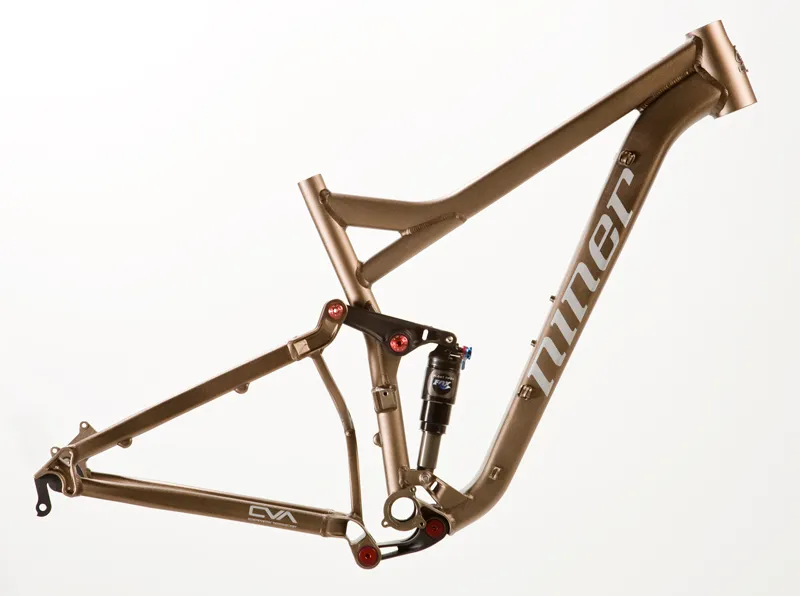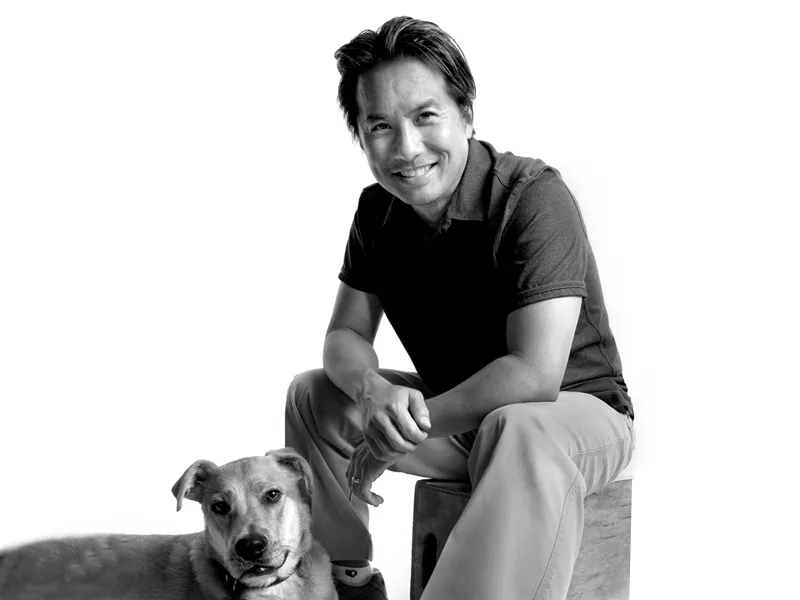2009 may be Niner’s breakthrough year. A minor flex niggle with their popular RIP 9 full-suspension frame appears to have been addressed, and their WFO 9 may yet prove that a 29-inch-wheeled bike can cut it in the ever popular all-mountain category.
What’s more, the buzz around the new bikes is strong enough that some of our testers who have been sceptical about the format in the past may be ready to jump on the bandwagon.
We spoke to one of the company's founders, Chris Sugai, to find out more about Niner's new bikes, the company philosophy and why they are so passionate about 29ers.
RIP 9 redesign and new WFO 9
The popular 4.5in RIP 9 trail bike has been redesigned from the ground up. The only thing it shares with last year’s model is the seat tube. Everything else has been modified, particularly to reduce the unwanted sideways flex. Chris explains: “Our goal was to increase stiffness without any weight penalty, and to do it with less parts."

Niner's new RIP 9 trail bike has been redesigned from the ground up
The company have spent some of their profits on mould charges for both the RIP 9 and the new 5.5in travel WFO 9 all-mountain bike. This has resulted in Niner being able to offer bikes with manipulated and hydroformed tubing, made for each bike’s intended purpose.
Chris says: “[On the] RIP 9 hydroformed tubing is butted internally and shaped externally to maximize strength to weight. The WFO 9 tubing has gone through the same process, but since its intended use is a little more aggressive riding, the tubes have been shaped, sized, and butted appropriately, with an S-bend in the downtube to accommodate rear shocks with piggyback reservoirs."

The WFO 9 all-mountain bike has an S-Bend in the downtube to accommodate piggyback shocks
Although the WFO 9 has been in development since the founding of Niner in 2004, they have decided to take their time to get it just right. To be released in the spring, the WFO 9 will be the longest travel production 29er on the market.
“We’re extremely excited about this bike, and we’re committed to pushing the envelope of what 29ers are capable of,” says Chris. In order to realise their dream, Niner have teamed up with Marzocchi to create a fork built just for this type of bike.
Chris says: "The fork will feature 100-140mm of ATA travel adjustment, an air spring and new 15mm through-axle technology. In addition, the WFO 9 is the only 29er so far compatible with the new Hammerschmidt shifting system from Truvativ."
Both bikes feature a tapered head tube design, using a 1.5in lower bearing race with a 1-1/8in upper bearing race. This design allows for the use of internal headset bearings, which Chris says will “increase the length of the head tube without affecting handlebar height, while also increasing strength at this critical area”.

Both the RIP 9 and WFO 9 now feature a tapered head tube design
The other major change is that Niner have moved away from CNC machining to forgings, including box section chainstays. Chris says this not only “increases lateral stiffness in the rear triangle” but also means the dropouts are replaceable on both sides. “This allows for upgrades to a 12mm through-axle or the use of the disc-side dropout to accommodate a Rohloff hub," he says. "The WFO9 will also be available in a 150mm rear spacing, which will come with a 12mm Maxle through-axle system.”
All pivot hardware for both bikes is made of custom alloy, and full complement bearings should equal longevity, especially important for the British and Pacific North Western mountain bike communities.

The bikes feature box section chainstays, custom alloy pivot hardware and full complement bearings
Born of a friendship, built on a joint passion
Niner was founded by Chris Sugai and Steve Domahidy in the autumn of 2004. Chris was a successful entrepreneur outside of the bicycle industry but was looking for a way to combine his business acumen with his hobby of tinkering with bikes. At 5ft 6in, he wasn't the most likely candidate to discover the performance gains of big wheels, but once he tried them he never looked back. Pretty soon, he says, he was "pulling ahead in the ranks of the regular Wednesday night rides”.
Steve has been in the bike industry for almost 20 years, and he and Chris met and became friends swapping bike stories during the long climbs on those weekly rides. Steve took notice of Chris’s near instant increase in speed and wondered what was different. The 29in wheel was the only thing that changed under Chris, and they soon began to talk about the benefits of the big hoops.

Steve Domahidy founded Niner with Chris Sugai in the autumn of 2004
Chris says: “Up until that point, most companies were simply transferring their standard cross-country 26in wheel geometry numbers over to a bike with larger wheels. We saw a huge opening – Niner was born on the amazing potential of the 29er wheel and the idea that it could be done better.” In fact, they’re so passionable about the wheel size that they make nothing else.
Chris believes that if you invest in a 29er “it will be the most slap-in-the-face noticeable 'upgrade” you have ever made to your mountain bike". He says: “Obstacles become smaller, because the wheels are bigger... The bike keeps riding above the terrain, instead of in it, equalling greater speed, stability and control.”
He feels the benefits are there for shorter riders as well as taller ones, although he acknowledges there is a cut-off point where “it’s difficult to get the handlebar height and standover low enough for them”.

The Niner philosophy
“We don’t do custom, but every bike we make gets the attention to detail that a custom frame would get," Chris said. "We want people to experience the ultimate joy when they’re riding our bikes, the same feeling we get when we ride. Bikes are our life. This isn't a business; it’s a passion, and our blood, sweat, and tears are poured into every model.”
Central to this philosophy is the importance they place on good customer support. Chris says: “We believe not just in the ride but in the rider, and we want our customers to feel confident in not only the equipment under them, but in the company that built that equipment. We want to take care of them as if they were family, and backing up our product is as important as the design of it. Ultimately, we want the consumer to have a Niner experience rather than just buying a bike.”
Since Niner’s inception, Chris has concentrated on marketing while Steve has handled the design work. But as Chris says: “As with any good partnership, it’s a grey line that separates the divisions, and we both give a wealth of input on everything Niner does.”
They are both also keen to listen to their workforce and customers. For example, Chris says they had a hard time coming up with a name for a new (but now established) suspension bike. “We decided to have a contest to see who could come up with a name. The RIP 9 (Roll In Peace) was the winner and something I doubt we could have come up with ourselves.”

Niner's RIP 9 – short for Roll In Peace – was named by a customer
Well worth a closer look
Of course, there are arguments for and against the big hoops. And, like most things, trail time on a 29er is the only way to find out if they’re for you or not. Things are likely to get even more complicated if the perceived push for 650B (27.5-inch wheels) happens as expected. But, if you do become inclined to check out a 29er, have a close look at Niner’s range as they appear to be the first manufacturer to have a 29er for most applications. Expect tests of the new RIP9 and WFO9 as soon as they become available.





